Nutritious Green Foods You Didn’t Know About
Good nutrition is all about variety! Browse through our list of unusual fruits and veggies and give yourself a chance to try something new.
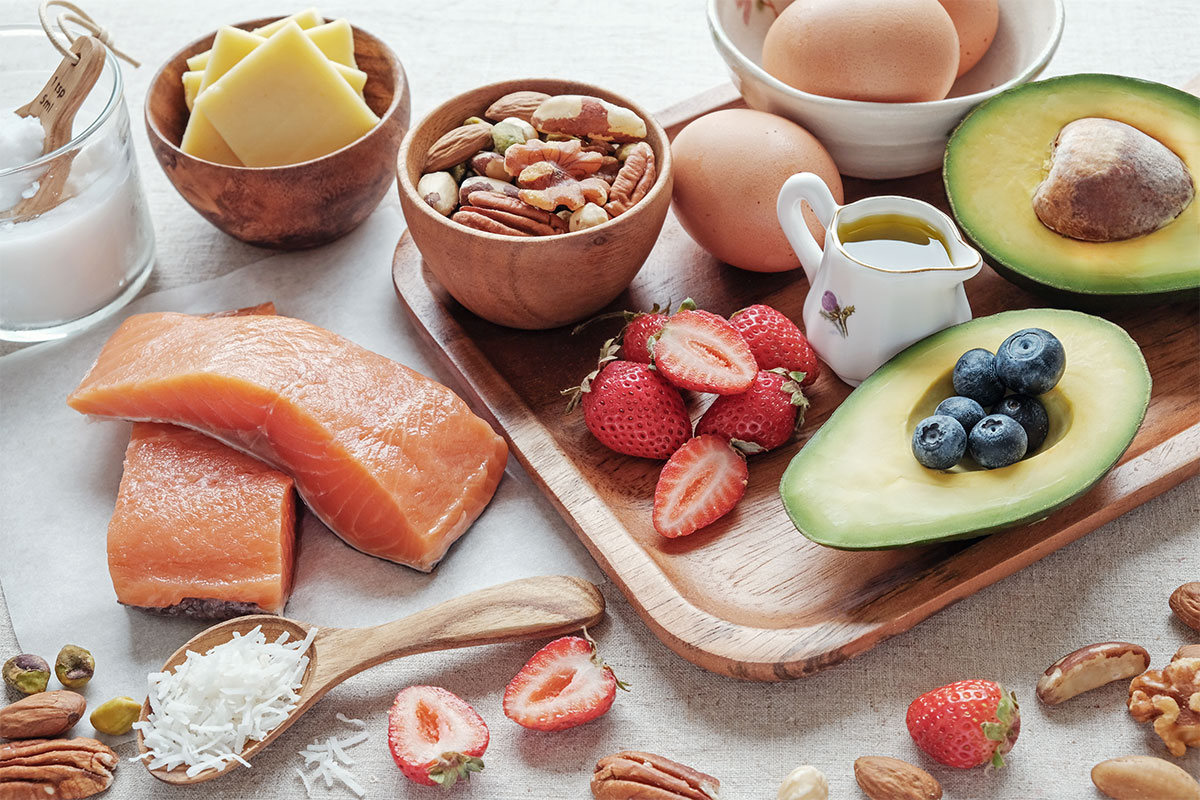

Can you provide me with a basic understanding of carbs, fats, and proteins?
– Mandeep P.

Carbohydrate, fat, and protein are the three macronutrients (needed in large quantities) that give us energy. Alcohol also provides calories but is not a nutrient. Water is the other macronutrient but is calorie-free.
Carbohydrates are compounds that are predominantly used for energy in the body to fuel our brain, nervous system, organs, metabolic processes, and muscles. We get 4 calories per gram from carbohydrate molecules that reach our cells. Some carbohydrates aren’t even digested or absorbed – namely dietary fiber. It is specifically identified on a food’s Nutrition Facts panel, as are sugars. Carbohydrates can be simple or complex in structure. Simple carbohydrates are single or double sugar units, while complex carbohydrates are starchy. Sugars are naturally found in fruits, milk and yogurt, some vegetables, but can be added to just about any packaged or processed food. Starches include foods like potatoes, pasta, bread, rice, corn and cereal grains.
Fats that we eat are triglyceride compounds, the same type we store in our bodies. We get 9 calories per gram of fat, making fat the most energy-rich macronutrient. In addition to long-term energy, we use fat for insulation and protecting our internal organs. Each triglyceride has 3 fatty acid strands. Some of the bonds in a fatty acid are doubled-up making them unsaturated. Mono-(single) and poly-(multiple) unsaturated fats are healthier for us than saturated fat. Trans fat is produced unintentionally when in food processing, and unsaturated fat (typically plant oil) is hydrogenated to become solid. These are the worst fats that negatively impact health, even more so than saturated fat. The highest sources of beneficial unsaturated fats are fatty fish and plant foods like nuts, olives, and avocados.
Proteins are chains of nitrogen-containing amino acids that we break down and reuse to form our own protein in cell membranes, antibodies, and enzymes. These are functions neither fats nor carbohydrates can perform, and we don’t have amino acid reserves, so it’s important to get enough protein. We get 4 calories per gram of protein. Some of the amino acids we can’t form ourselves and so are considered essential to our bodies. Protein sources with the most essential amino acids include eggs, poultry, beef, pork, and dairy products. With an adequate amount of a wide variety of legumes, vegetables, whole grains, nuts and seeds, vegans can get enough essential amino acids from plant foods alone.
Did you know?… If you eat too many calories from any energy source, your body can convert it to stored fat.
– Debbie J., MS, RD
This article should not replace any exercise program or restrictions, any dietary supplements or restrictions, or any other medical recommendations from your primary care physician. Before starting any exercise program or diet, make sure it is approved by your doctor.
Some questions have been edited for length and/or clarity.
 Have a nutrition question? Our registered dietitian is ready to help!
Have a nutrition question? Our registered dietitian is ready to help!
Email nutrition@lafitness.com or submit your question below and it may be featured in an upcoming article!
Good nutrition is all about variety! Browse through our list of unusual fruits and veggies and give yourself a chance to try something new.
Does liberally salting your food help you pump more iron in the gym? Registered Dietitian, Debbie James, investigates the claims!
One frequently asked question is about the recommended intake of protein. We hear you! Here is everything you need to know.
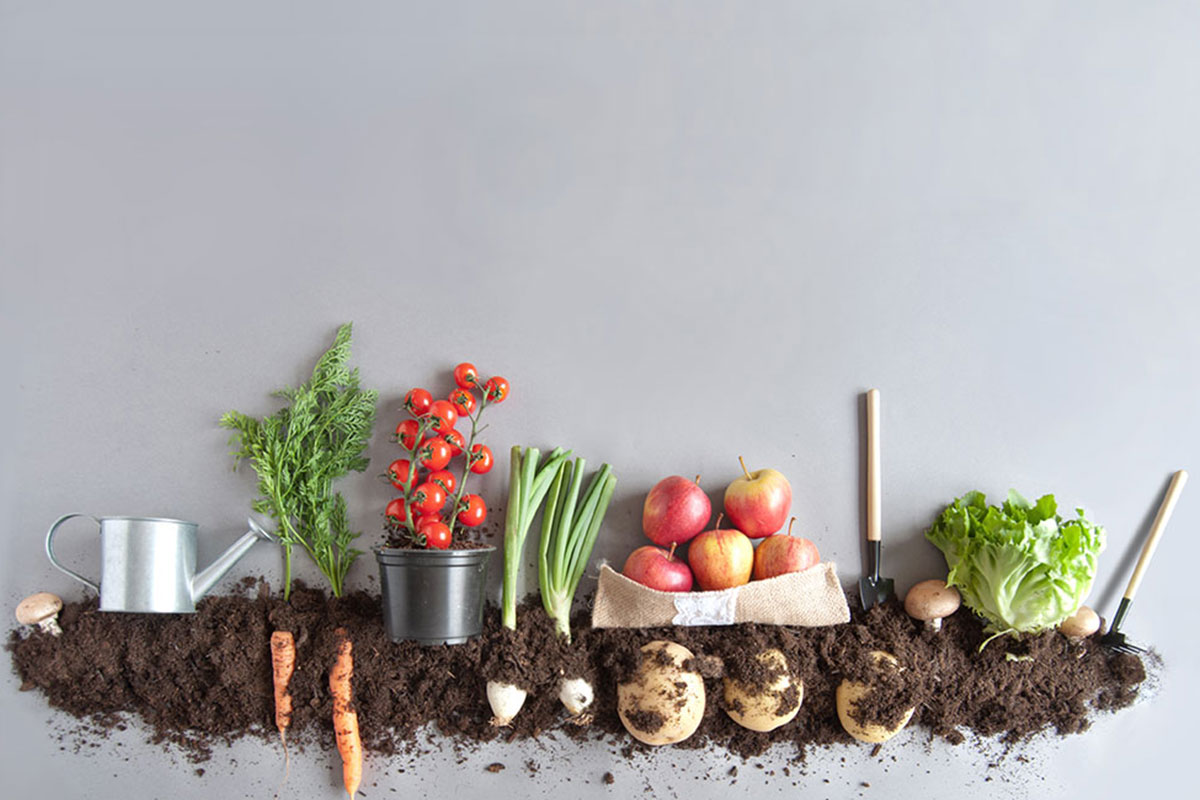
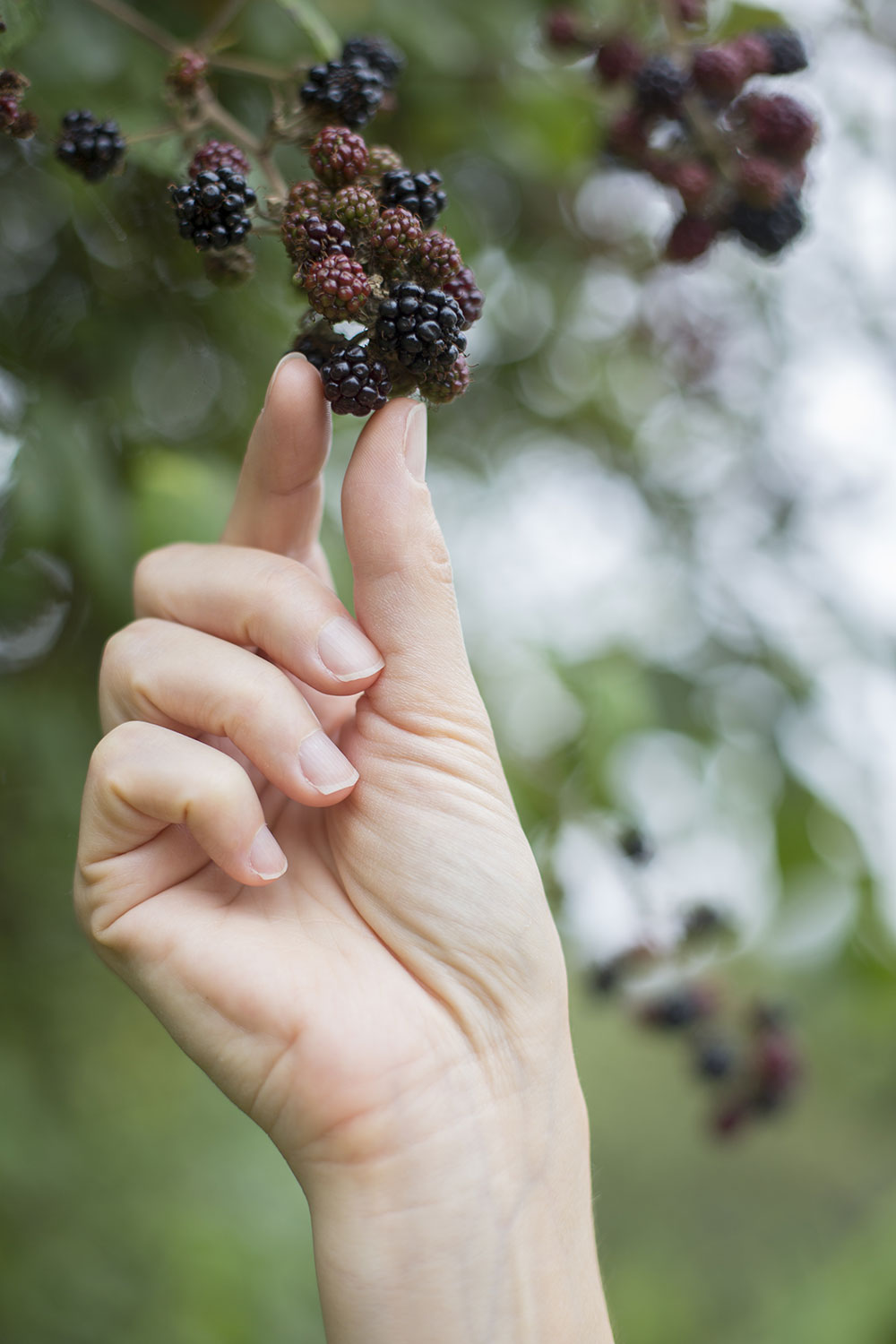
When I was a kid, we picked wild blackberries from a nearby field, took them home, rinsed them under water and popped them into our mouths. No worries about pesticides, genetic modification or added wax. The only things we had to watch out for were bugs. They feed off plants just like we do, and produce is no exception. I remember tiny caterpillars creeping along a stalk of celery or burrowed into an apple. And some are so good at hiding between folds of lettuce or florets of broccoli, you’d never know they were there. Gross or natural?
You’ve got to expect some infestation across all types of produce grown in all areas of land if you only let them rely on their own defenses, such as in organic farming. Bugs on produce generally aren’t harmful. On the other hand, spiders that feed on those bugs can be. Black widows have been spotted on grapes! Of course, you wouldn’t eat one, but in handling the fruit you could be bitten. Due to our agricultural processes and quality control, we are lucky enough to have plentiful supplies of quality organic produce that we usually don’t need to worry about other pathogens from contaminated crops.
Sometimes, those wild blackberries were uneven and lumpy or irregular in size. In the summer, when they were ripe, we were allowed to climb up a neighbor’s tree and pick some cherries. There were always a few that were conjoined, eliciting “eew” and “yay/bonus/double!” at the same time. The vegetables at the one farmer’s stand-in town included those that were spotted, discolored or just weirdly shaped. We nicknamed some “Misfit Mushrooms” and “Awful Eggplant”. They were still quite edible though. What I’m trying to convey is that natural produce with blemishes or deformity aren’t always pretty and can be downright ugly.
With the modern concern of food waste, there is a movement to use all of an available crop. Search the hashtag #UglyProduce and you’ll see what’s usually rejected by major grocers that can be salvaged. There’s actually a market for less-than-perfect fruits and vegetables! A California company ships boxes of such produce to customers in major cities on the west coast and Illinois. A major grocery chain in France offers a discount on its “inglorious fruits and vegetables.” Organic produce may or may not be ugly, but it’s certainly more prone to natural genetic diversity and environmental exposure.
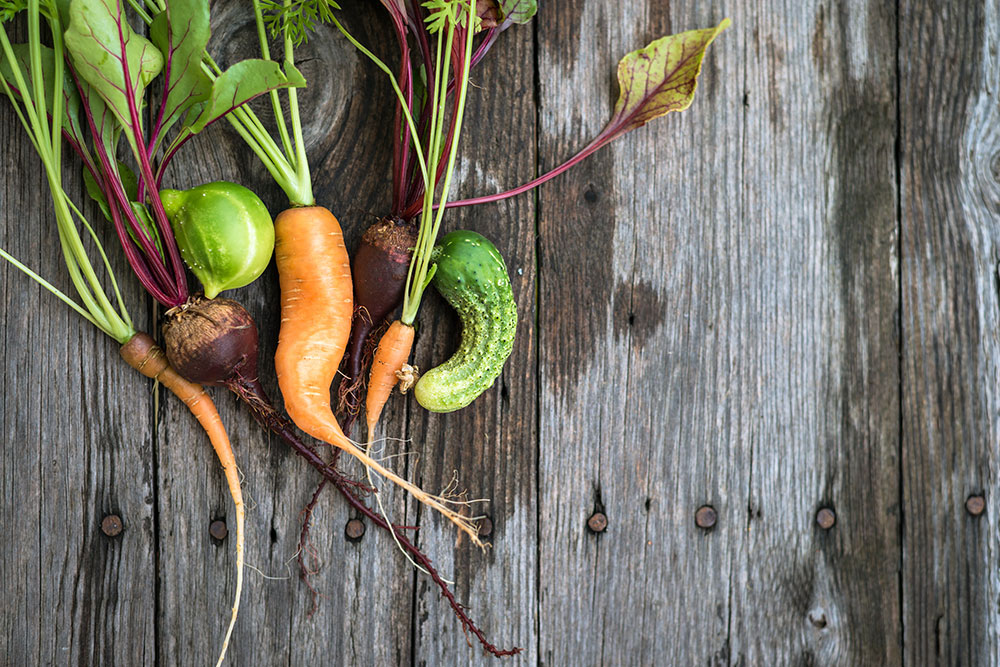
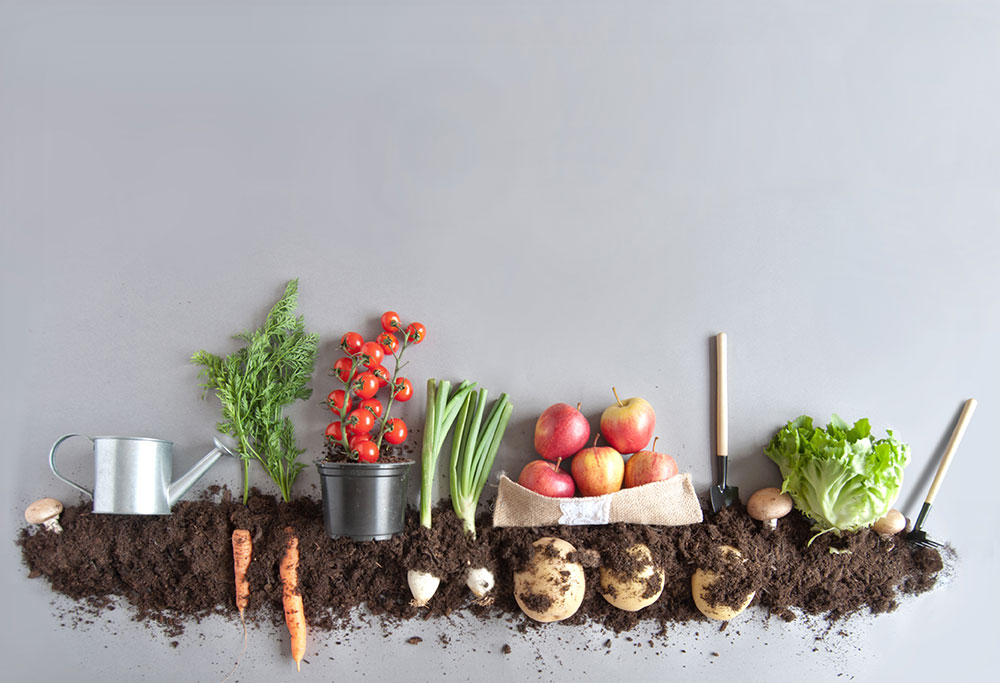
The good news about organic produce is that you won’t get food grown with synthetic pesticides, herbicides, or fertilizers, or derived from genetic bioengineering. The USDA Pesticide Data Program summary for 2016 indicates that pesticide residue was present in 77% of fruit and vegetable commodity (high-consumption) samples, though 99% were below the tolerance levels allowed by the EPA. The criteria for carrying the USDA Organic Seal mandate that organic fruits and vegetables are grown in accordance with the National Organic Program regulations. To certify and carry the Certified Organic seal from CCOF, it’s required to follow similar organic standards.
According to Consumer Reports’ special report “Pesticides in Produce” eating produce that is organic lowers your personal exposure to pesticides and has a myriad of other health benefits. It may be tougher on your wallet, however. Before you decide to spend up for pricier organic options, be sure you’re getting the benefit of at least 5 servings of fruits and vegetables daily.
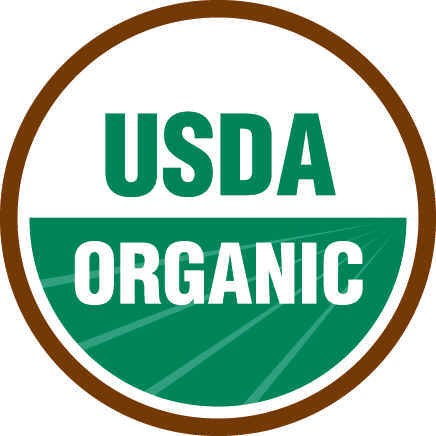
Whether organic or conventional, remember to WASH OFF YOUR PRODUCE under running water for 10-20 seconds before enjoying! Bye bye creepy crawlies, hello clean.
Note: Some organic produce isn’t certified if the farm opts not to go through the process and pay for the certifications and inspections, or the grower produces a very small amount of organic crop.

Good nutrition is all about variety! Browse through our list of unusual fruits and veggies and give yourself a chance to try something new.
Does liberally salting your food help you pump more iron in the gym? Registered Dietitian, Debbie James, investigates the claims!
One frequently asked question is about the recommended intake of protein. We hear you! Here is everything you need to know.

Imagine your life as a movie, with you as the star and the choices you make ultimately determine the closing credits. That’s what life is after all, right? It’s made up of decisions you ultimately choose. You’re the star of the show, and your friends and family are there cheering you on for success.
But every great movie has its antagonist(s), the bad guy, the something or someone holding you back from reaching your ultimate goal. This may seem scary, but guess what this makes you? The protagonist! The leading character in your own narrative. You’re the hero, the one who determines the acts of your life.
So, ask yourself this – what choices am I going to make today that will write the next page of my life’s story?
Your best life will not be without its challenges, and in order to face these obstacles head-on, it’s important to remember that having the right physical and mental mindset is of the utmost importance.
Villains come in many forms. Today, our focus is on nutrition killers. Cue the menacing music, shut the blinds, and listen closely, because knowing what to look out for just might save your life.

For decades, breakfast has been hailed as the most important meal of the day, so shouldn’t something as instrumental in laying the groundwork for the rest of the day’s progress be given adequate attention? Even superheroes need their superfoods and we’re here to let you know of some of the seemingly healthy breakfast options that are secretly wolves in sheep clothing.
Cereal and Granola
Seamlessly innocent but loaded with sugar. Even options labeled as ‘high-fiber’ or ‘whole grain’ doesn’t discount the fact that most morning cereals and granola aren’t as healthy as they let on. For those who are gluten intolerant, watch out for inflammation trouble and skin breakouts. Sugar can also have this effect on the body. Not to mention spiking blood sugar levels and leaving you feeling sluggish after the sugar rush wears off. Think of overly processed and high sugar meals as your body’s kryptonite.


Healthier Alternative: Try an apple with some peanut butter and a handful of almonds instead. The apple will help give your body a healthy dose of energy from its naturally occurring sugar, and peanut butter and almonds add protein. Thirsty? Keep those bones strong with a glass of calcium-rich milk (or almond milk if you’re lactose intolerant). Now you’re ready to take on the day!
The allure of hot golden crisp French fries, the crunch of salty potato chips… the thought alone is drool-worthy, but at what cost?
Chips, Fries & Popcorn
Calling out all chips – blue corn chips, veggie chips, multi-grain chips, and baked potato chips! Much like ice cream or other indulgent snacks, they seem to always be there in a time of need. The cravings for sweet and salty snacks is common for most, but can easily be replaced with healthier alternatives that provide that sweet or salty fix we’re craving (see below!)
The trouble is that most chips contain trans fats that can increase cholesterol levels, leading to an increase in coronary heart disease. If you’re thinking blue corn chips, multigrain chips, veggie chips or otherwise are healthier for you, we hate to burst your bubble, but they’re not. Calorie, fat and sodium counts are still going to be at elevated levels and lacking the true nutrition your body needs to stay properly fueled.
Fries, along with other fried foods, are oftentimes cooked in harmful oils and trans fats. When foods are baked or fried at high temperatures, a carcinogen called acrylamide is produced, which has been shown to increase cancer risk in mice. However, more studies need to be done on how this carcinogen affects humans.1 Our suggestion? It’s probably best to steer clear of greasy fried foods.
Sadly, microwaved popcorn is also another ostensibly healthy snack that actually isn’t so healthy. There are three main culprits that cause this: 1) carcinogens (there’s that word again), otherwise thought of as cancer-causing free radicals; 2) perfluorochemicals (PFCs) which help make the bags more greaseproof and also have been linked to thyroid disease, ADHD, and other illnesses, and lastly; 3) diacetyl, another cancer-causing chemical (found in the artificial fats).
Phew. That’s a lot of health negatives, not to mention the excessive amounts of sodium! Pop your own kernels to negate a lot of these issues.



Healthier Alternative: If you’re craving something sweet to snack on, make your own yogurt parfait with Greek yogurt, fresh fruit, nuts, and cacao! Looking for something more on the salty side? Try olives with cheese, pickles or whole wheat crackers topped with cottage cheese or a mixed olive spread!
Life gets busy, days fly by, and sometimes it feels like there aren’t enough hours in the day to focus on healthy eating. This is normally when fast food seems like the quickest and easiest option when rushing around to get things done – but don’t take the easy option! Remember, you’re the hero of your life’s movie and heroes never take the easy way.
“Healthy” Fast Foods
Let’s break it down. Sure, fast food burgers are generally assumed to be unhealthy, and for those looking to lower their caloric intake or choose a healthier option, they may turn instead to a fast food salad, veggie burger, veggie pizza, veggie omelet, turkey burger, or grilled portabella sandwich instead (just to name a few). These are not always a better choice.
These marketed “healthier options” are usually pre-made, cooked in oils or butter, and can contain “hidden” calories found in added dressings, toppings or seasonings they are prepared with. There are ways, however, to help combat these issues. Ask for dressings on the side, have your meal prepared without butter or salt, and ask to have your burger or sandwich made protein-style (wrapped in lettuce without a bun).
Plot Twist: The drive-through isn’t your only enemy.

It’s important to note that this includes fast frozen dinners and sometimes canned products too. Yes, the grocery store does have its version of “drive-through” foods. Frozen diet dinners are usually packed with preservatives, loaded with sodium and contain few veggies. Have you ever wondered why a frozen meal just doesn’t quite taste as good as a home-cooked meal? That’s because it’s not fresh.
Canned products like soups and beans can seem healthy, but we think you’re noticing a theme here… beware of these seemingly healthy products! When shopping always read the ingredients list to check for sodium, sugar, and carbs, and take into consideration the serving size. A product may seem healthy, but if it contains 3 servings and you eat the entire thing you have to remember to multiply the nutrition facts by three (as an example).
A word to the wise, good things take time.

Healthier Alternative: Make your own “fast foods” at home! Sunday night meal prep means you can make your foods in advance, pay attention to what you’re putting into your dishes, and then pre-package (or even freeze) your meals ahead of time for the rest of the week. Less money spent on eating out, a healthier body, and the proud accomplishment that comes with making a smarter choice. You go, you.
Fruit is healthy, right? Right? Not always. Fruit juices, dried fruit, smoothies, fruit cocktail, and fruit snacks can be loaded with added sugars! Seems strange, doesn’t it? Fruit is already naturally sweet so why add even more sugar? Too much sugar can lead to a countless number of diseases, obesity, cardiovascular disease and diabetes.
When fruits are taken out of their original states, a lot of times this means what you’re eating or drinking doesn’t have the same nutritional value as eating the fruit whole on its own. Dried fruits usually have added ingredients to help with self-life and spoilage. Fruit juices are often not even 100% fruit juice and can contain artificial flavors and added sugars.
Smoothies are tricky because they can be healthy if made yourself at home and with the right healthy ingredients, but if purchased elsewhere, they can often be loaded with unhealthy base ingredients and again, added sugars. Fruit cocktails are kept in a sugary syrup that does nothing good for the body and fruit snacks pale in comparison to eating the real thing.


Healthier Alternative:
Breads get a bad rap. Are they really bad for you? Yes and no. What is bad for you are the breads that add no real nutritional value to your diet or the breads that add way too many calories to your meal.
Wraps and Croutons
There is no lack of the types of tortilla wraps you can choose from. From sun-dried tomato, to spinach, to whole wheat, they seem healthy but depending on their size, added proteins, fillers, and sauces, your calorie count can easily exceed a healthy value.
As for croutons, they may seem small and harmless but they offer no added nutritional benefit for the body. It’s an easy way to add on calories to otherwise healthy salads. If you’re missing the crunch they bring to the dish, try swapping them out for nuts or crunchy veggies instead.


Healthier Alternative: If you don’t want to completely give up your relationship with bread, try opting for 100% whole wheat sandwich thins or use cracks instead. Another option is to use smaller tortillas for wraps and save yourself the extra calories, or you can always split your sandwich or wrap in half and enjoy the rest later!
Sports drinks, energy drinks, diet drinks, tea drinks, flavored soymilk, protein shakes, and sodas – all of these are not water and not the greatest for you.
Sports drinks are mainly a combination of water (good), electrolytes (not bad) and sugar (yikes). For athletes performing high-intensity training, they might benefit from the electrolytes and sugar to help replenish the sodium and sugars they’ve depleted during their workout. However, most people do not need these types of drinks and are best to replenish with all-natural water instead.
Energy drinks should be a definite no-go. Most energy drinks on the market are not FDA approved because they are marketed as dietary supplements, rather than a conventional food or beverage which fall under the authority of the FDA. Without knowing exactly how these drinks are affecting your body, or the ingredients in them, again opt for water instead. It’s the one thing your body absolutely needs after a major sweat-sesh.
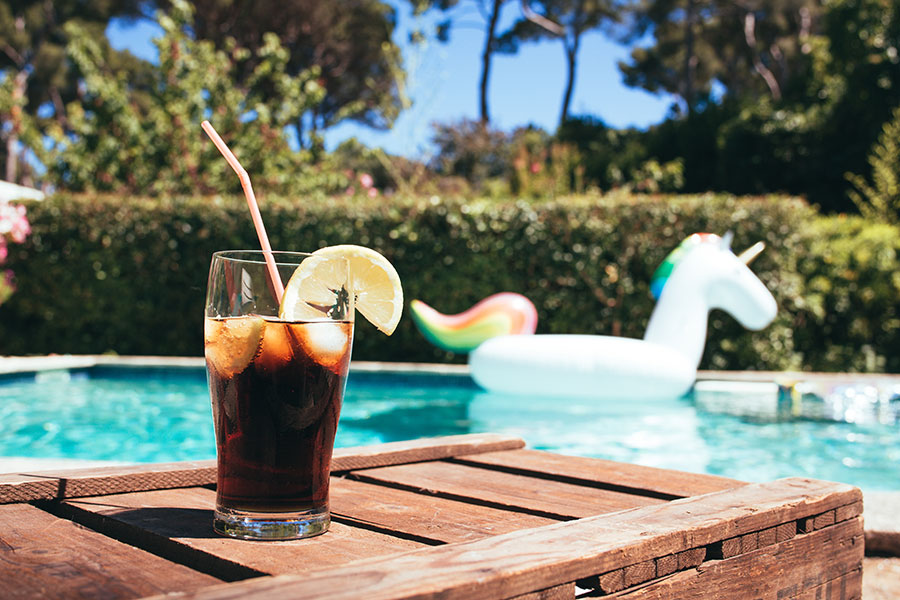
Diet sodas and regular sodas are usually made up of artificial ingredients, flavorings, and high levels of sodium. Even drinks that boost about zero calories, zero sugar, and zero sodium should still raise a red flag. Diet drinks use alternative sweeteners that could do long-term damage on the body. Drinkers of diet sodas have also been found to eat more calories after consuming a diet beverage2.
Good news! Tea drinks can be healthy! It’s the tea beverages with added sugars, sodium and artificial flavorings that are the ones to stay away from.
Sugar seems to be the reoccurring theme of what makes certain beverages less than ideal. For example, flavored soymilk can contain so much added sugar that it acts as more of a dessert than a regular everyday drink. Opt for original soymilk if you prefer it over whole milk. Regular soy milk can help provide the body with protein and potassium and be low in cholesterol.3
Take caution with protein shakes. While protein is essential to helping build muscle and keeps our bodies strong, the wrong type of protein drink could be highly processed and filled with sugar. Make sure you know exactly what ingredients you’re consuming before mixing up your next protein shake!
Breads get a bad rap. Are they really bad for you? Yes and no. What is bad for you are the breads that add no real nutritional value to your diet or the breads that add way too many calories to your meal.

Healthier Alternative: The healthiest option is always water. Our bodies need it to live. If regular water gets too boring for you, try infusing it with cucumber or orange slices. There are also carbonated flavored waters on the market which can help satisfy if it’s the fizz you’re missing.
Light salad dressings, flavored fat-free yogurts, low-fat muffins, reduced-fat peanut butter – they all sound great but don’t let their labels deceive you. Many times, when the fat is pulled out of a product that means a less healthy alternative is being added in its place to make up for the lack of flavor. This could mean you end up eating chemicals, artificial sweeteners and excess amounts of sugar or sodium that your body doesn’t need.
Even gluten-free or organic labeled food items can be unhealthy if they are junk foods. Sorry – there is just no way to make those tasty cheats healthy, even if they are gluten-free or all organic (sigh).
Margarine also falls into this category because contrary to popular belief, it’s not all that healthy. Marketed as cholesterol-free and as a healthy alternative to butter, it’s actually much higher in trans-fat compared to butter, which can elevate cholesterol levels and do damage to blood vessel walls.4 If you’re looking to stay away from both butter and margarine, try supplementing with olive oil instead.
Breads get a bad rap. Are they really bad for you? Yes and no. What is bad for you are the breads that add no real nutritional value to your diet or the breads that add way too many calories to your meal.
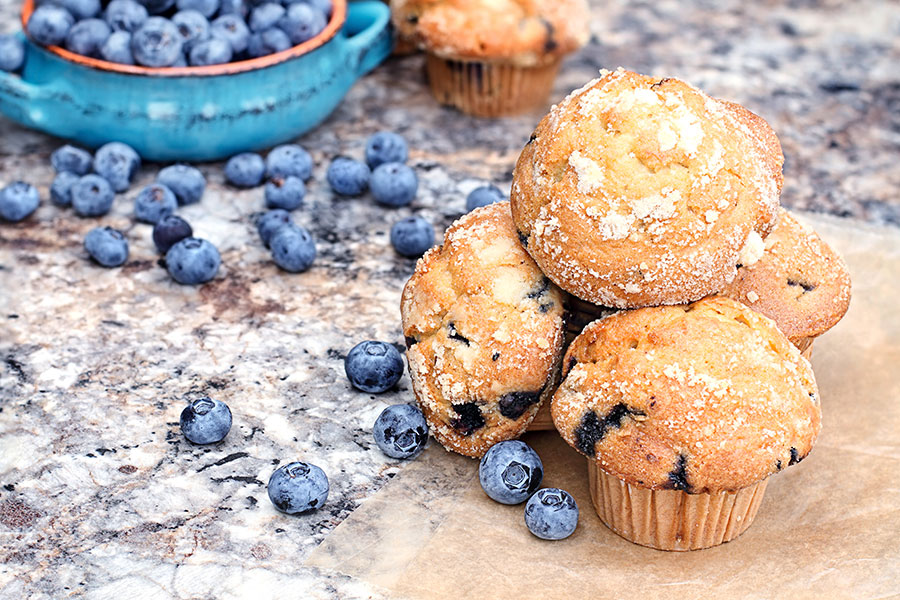

Healthier Alternative: Sometimes it’s OK to indulge in the all-natural, full-fat products. Our bodies do need a healthy balance of fats after all. Just make sure not to overdo it!
Sources:
Good nutrition is all about variety! Browse through our list of unusual fruits and veggies and give yourself a chance to try something new.
Does liberally salting your food help you pump more iron in the gym? Registered Dietitian, Debbie James, investigates the claims!
One frequently asked question is about the recommended intake of protein. We hear you! Here is everything you need to know.


If I eat 1 package of sugar-free instant oatmeal with 16 blueberries for breakfast at 6 am, is it okay to eat 8 whole wheat crackers and 1 tablespoon of peanut butter an hour before I work out with my trainer at 10 am?
– Michelle

Yes! The early morning meal restores glycogen and primes blood sugar, while the pre-workout snack would help maintain a constant fuel supply. However, together they may provide less than 500 calories to sustain you for 5 hours (6 a.m. – 11 a.m.) which may not be enough to really push through a tough workout. I’d recommend a post-workout snack such as a yogurt cup, hard cooked egg with pretzels, or hummus with pita and carrots unless you’re going straight for an early lunch. Good options would be vegetarian chili, a turkey sandwich or salad niçoise (greens, tuna, potato and string beans).
– Debbie J., MS, RD




This article should not replace any exercise program or restrictions, any dietary supplements or restrictions, or any other medical recommendations from your primary care physician. Before starting any exercise program or diet, make sure it is approved by your doctor.
Some questions have been edited for length and/or clarity.
 Have a nutrition question? Our registered dietitian is ready to help!
Have a nutrition question? Our registered dietitian is ready to help!
Email nutrition@lafitness.com or submit your question below and it may be featured in an upcoming article!
Good nutrition is all about variety! Browse through our list of unusual fruits and veggies and give yourself a chance to try something new.
Does liberally salting your food help you pump more iron in the gym? Registered Dietitian, Debbie James, investigates the claims!
One frequently asked question is about the recommended intake of protein. We hear you! Here is everything you need to know.
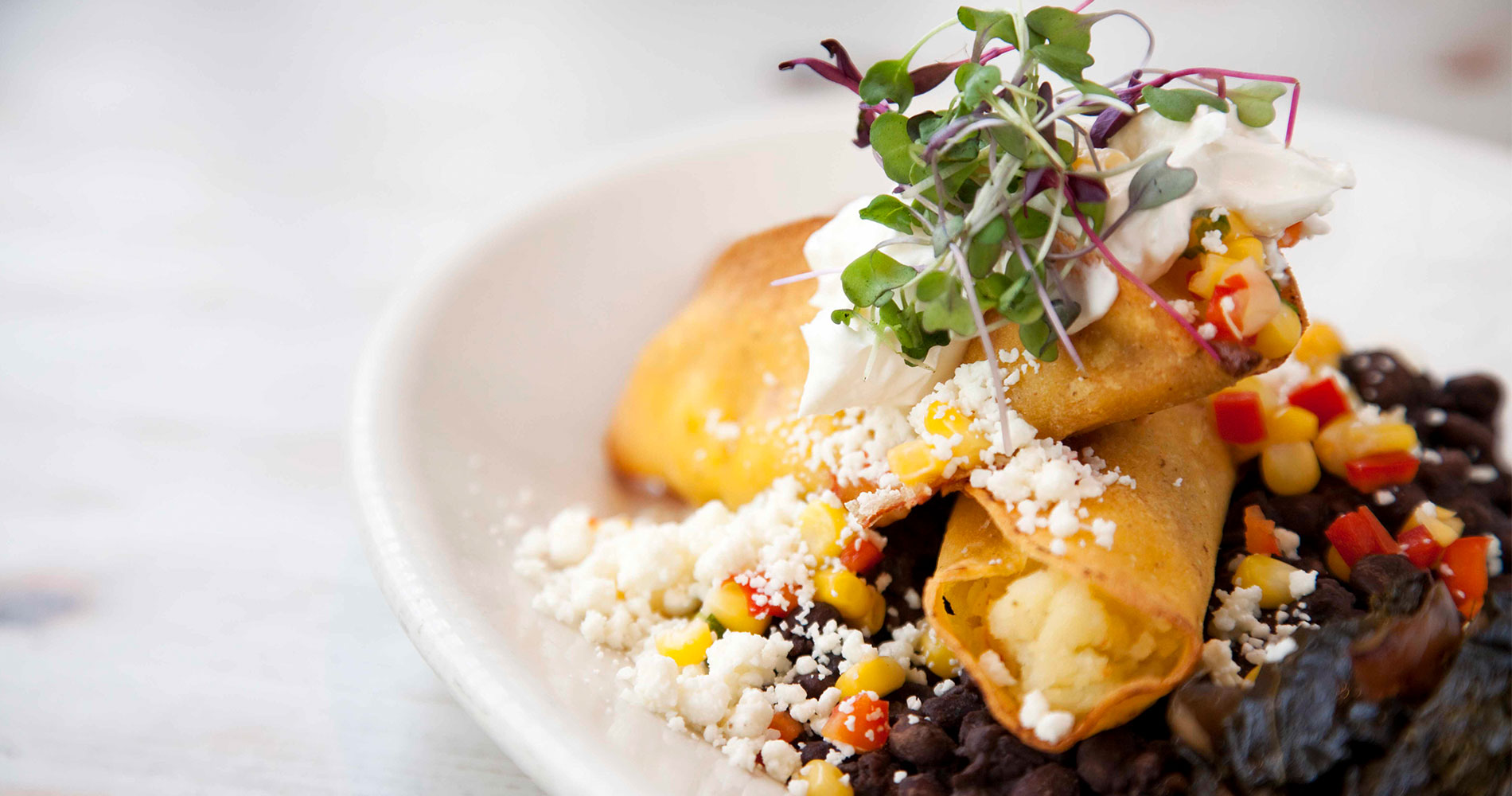

Owner Nat Stratton-Clarke. Photo credit: Chustine Minoda
Meet owner of Cafe Flora and Floret by Cafe Flora, Nat Stratton-Clarke.
Q: What is it about Café Flora that makes it unique to alternative healthy dining experiences?
Nat Stratton-Clarke: Cafe Flora has been a local favorite since we opened in Seattle in 1992. At that time vegetarian dining was seen as just brown rice and vegetables, we flipped that and showed our guests how textural, interesting and delicious vegetarian cuisine is. Our chef team has always worked creatively to bring in flavors from all types of cuisines, this keeps things interesting and so flavorful.
With Floret by Cafe Flora now open at Sea-Tac International Airport we have the exciting opportunity to do the same thing with travelers and share with them our delicious variety of breakfast, lunch and dinner items for both sit down and grab-and-go. They can enjoy real, healthy foods that taste amazing and just happen to be vegetarian. Also just because we are located at the airport doesn’t mean we changed our ways, we worked hard to get our farm partners “badged” to deliver to the airport so we can offer the same fresh, local produce our guests have come to know and love.
Q: How often does the menu change at Café Flora?
NSC: Our menus change seasonally so about four times per year. This allows us to plan with the seasons and for our local farmers to showcase what is fresh from their farms right now.
Q: What would you like our readers to know about adopting a more plant-based diet?
NSC: It is easier to do than you think. Dining at Floret and Cafe Flora gives our guests inspiration for when they are cooking at home. Our chef team is incredibly creative and people leave realizing there are easy ways to make delicious food that doesn’t involve animal products but is filling and packed with flavor.
Q: Why is it important for people to buy local and use sustainable ingredients versus buying from bigger grocery chains?
NSC: We have worked with local farmers and purveyors since the beginning of Cafe Flora. You not only support these hard-working folks but you support a whole community of jobs in your backyard when you buy local. And of course, it’s good for the planet. I grew up in Berkeley, CA during the Alice Waters farm-to-table movement and my family made weekly trips to the farmers market to purchase food for the week. It was what you did and it felt so natural to support what was being grown, baked and prepared right in our community. It’s something I’ve always been passionate about and it excites me to do this on a larger scale with Floret and Cafe Flora and really help other small farms and businesses thrive.
Q: What is your current favorite dish at Café Flora?
NSC: I love our Oaxaca Tacos available at both Cafe Flora and Floret. They are the most brilliant combination of flavors and textures from the cheesy mashed potatoes in crisp corn tortillas to the black bean stew, fire roasted salsa, and lime sour cream. Also, our vegan cinnamon rolls are a crowd favorite and we’ve brought our same recipe to Floret for travelers to enjoy on the go!
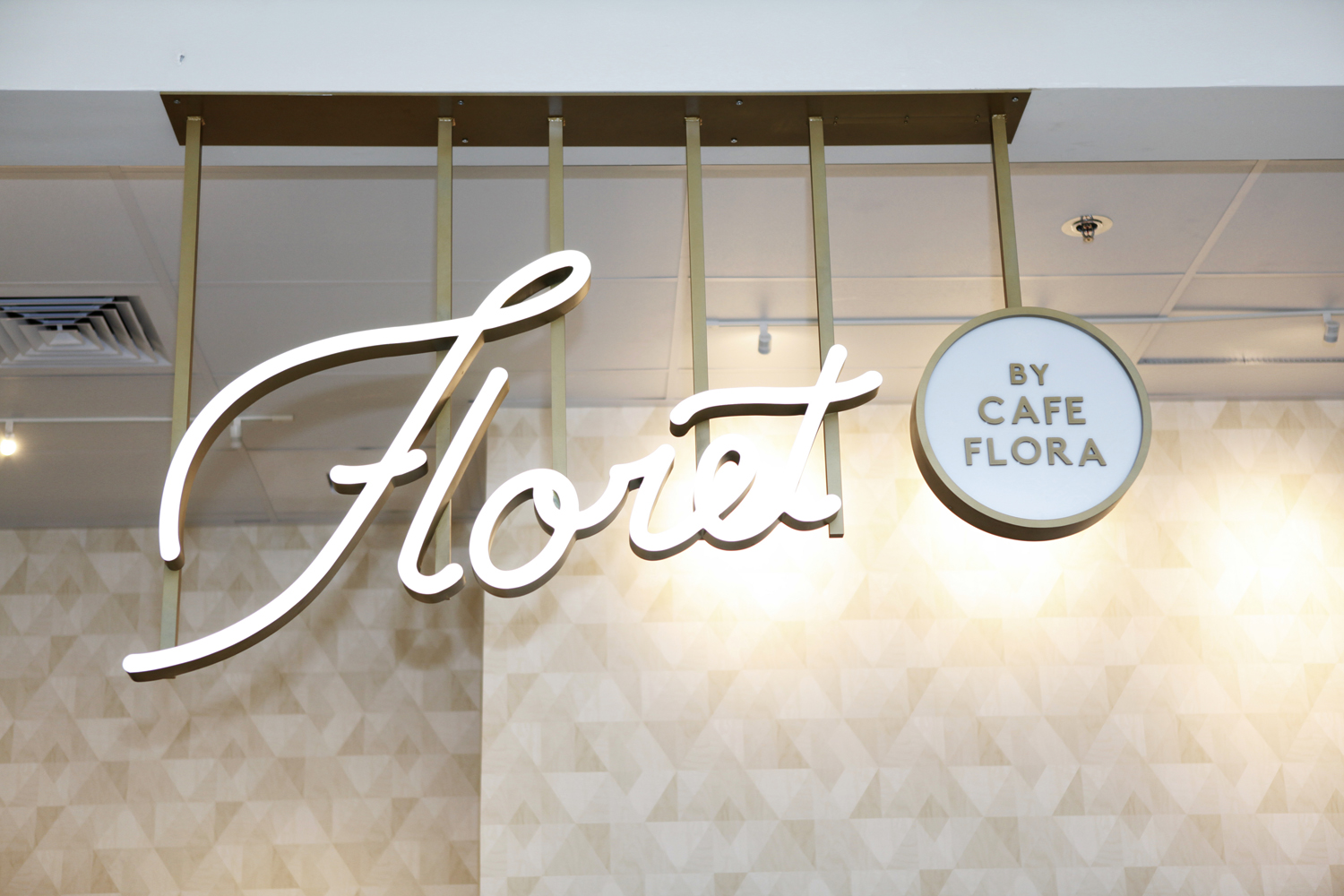


Photo credit: Belathee Photography
Cafe Flora is located at the following location:
Distance to closest LA Fitness: 6.2 miles to Ballard LA Fitness
Cafe Flora is located in Seattle’s Madison Valley neighborhood at 2901 East Madison Street. Open Monday-Friday at 9 a.m. for breakfast, lunch and dinner with weekend brunch from 9 a.m. – 2 p.m. and dinner at 5 p.m. Menus and additional details at cafeflora.com.
Floret by Cafe Flora is located at Sea-Tac International Airport between A and B Terminals and is open daily for grab-and-go from 5 a.m. – 9 p.m. and dine-in from 6 a.m. – 10 p.m. both offering breakfast, lunch and dinner items. Full menus available at floretseattle.com.
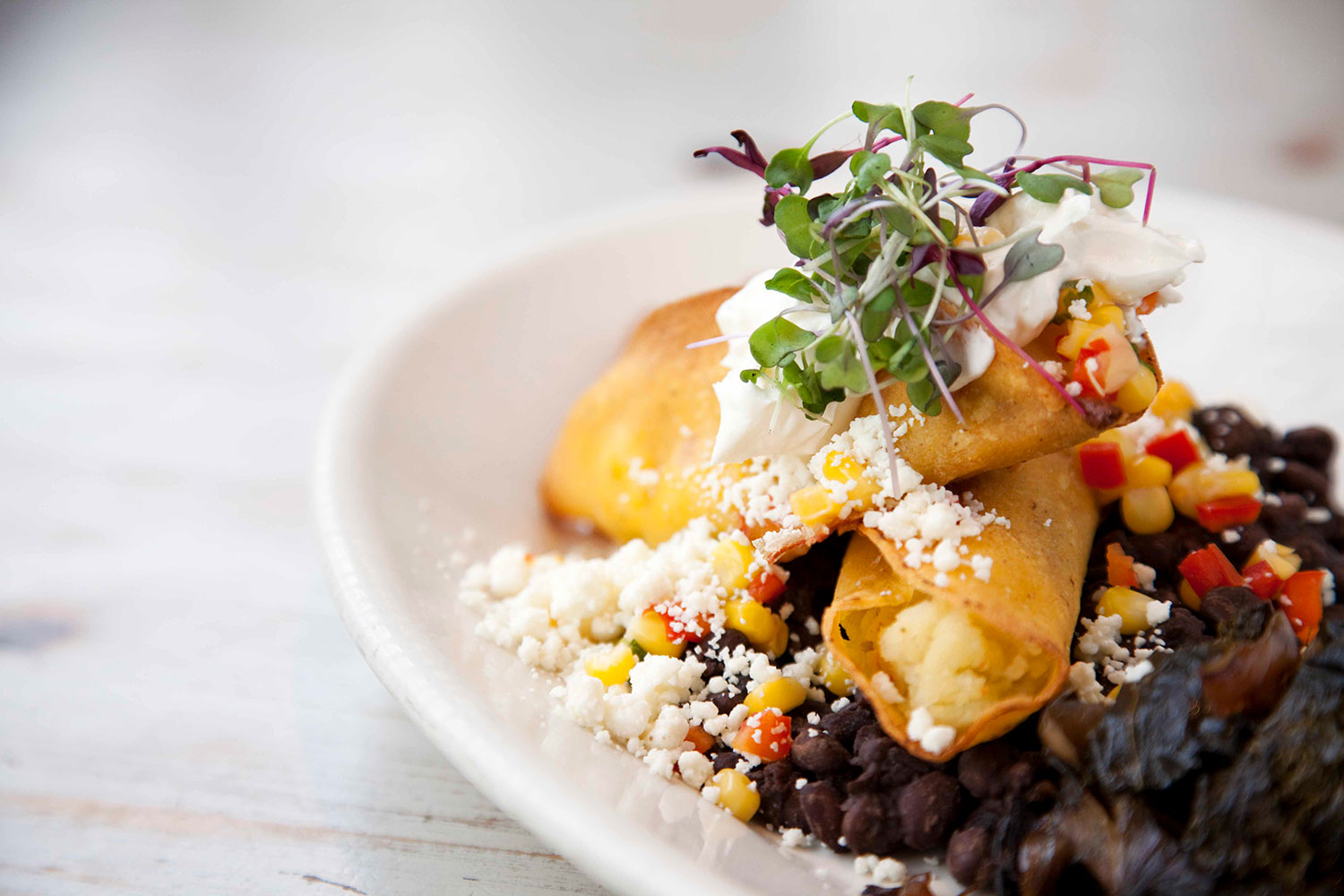
For the Tacos
For the Black Bean Stew
For the Chard
Step 1: Cook the beans. If using dried, soaked beans, drain them and put them in 5 cups of boiling water. Reduce heat to low and simmer, partly covered until the beans are tender, but still hold their shape, about 1 ½ hours. If using canned beans, drain and replace with 1 cup cold water. Combine the cooked beans with the corn, garlic, cilantro, red pepper flakes, cumin seeds, chili powder, oregano, brown sugar and salt and simmer until the flavors are blended, about 15 minutes.
Step 2: Cook the potatoes in just enough boiling water to cover until they are tender, about 20 minutes. Then mash the potatoes with butter and salt and keep warm. In a small bowl, combine the cheeses and red pepper flakes and keep them nearby.
Step 3: Preheat the oven to 400 degrees and have ready a baking sheet or roasting pan to hold the tacos. Heat 1/8 inch of vegetable oil in a skillet over medium-high heat and soft-fry the tortillas, without allowing them to become crisp, one at a time. (The tortillas should be oily and soft so they will crisp in the oven after they are filled.)
Step 4: Fill each tortilla with 1/3 cup of the mashed potatoes, 1/8 cup of the grated cheese mixture and a generous tablespoon of the chopped pepper. Roll the tortillas around the filling and secure them with toothpicks. Arrange the tacos in a single layer on the baking sheet or roasting pan and bake until the cheese has melted and the tortillas are crisp, about 18 minutes.
Step 5: While the tacos are baking, steam the chard in a covered pan over a small amount of boiling water until just tender, about 5 minutes. Puree the garlic with lemon juice and olive oil, and season with salt and pepper, then toss it with the steamed Swiss chard.
Featured Recipes
Good nutrition is all about variety! Browse through our list of unusual fruits and veggies and give yourself a chance to try something new.
Does liberally salting your food help you pump more iron in the gym? Registered Dietitian, Debbie James, investigates the claims!
One frequently asked question is about the recommended intake of protein. We hear you! Here is everything you need to know.
Be the first to know about exclusive
content, deals and promotions